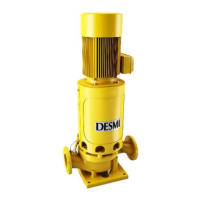Why does my Desmi NSL 80-265 have low capacity?
- Ddarrell06Aug 10, 2025
If your Desmi Water Pump has no or low capacity, several issues could be the cause. First, the direction of rotation might be wrong; change it to clockwise when viewed from the shaft end, following the arrow's direction. Another reason may be that the piping system or the pump itself is choked; in that case, clean or replace the piping system, or clean the pump. Suction line leaks could also be the problem; find and repair any leaks, ensuring the non-return valve is submerged. Finally, check if the suction lift is too high by referring to the data sheet Q/H curve and NPSH, or the pump and piping system may be wrongly dimensioned.

